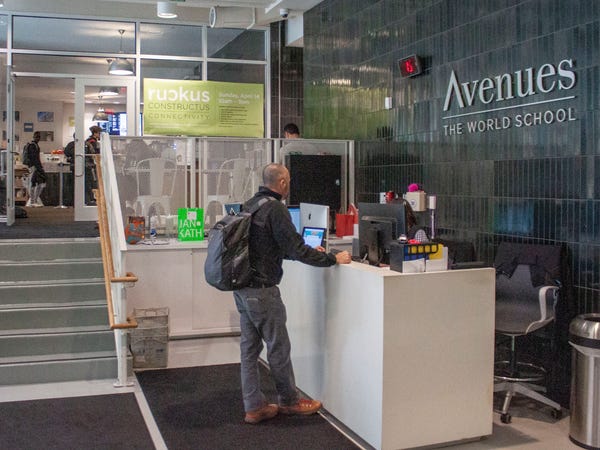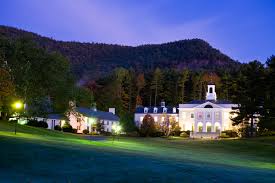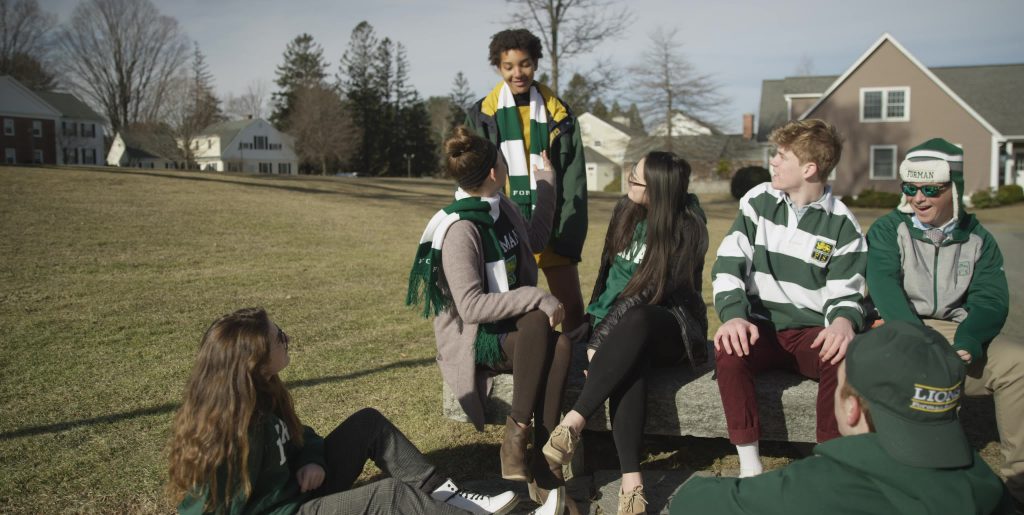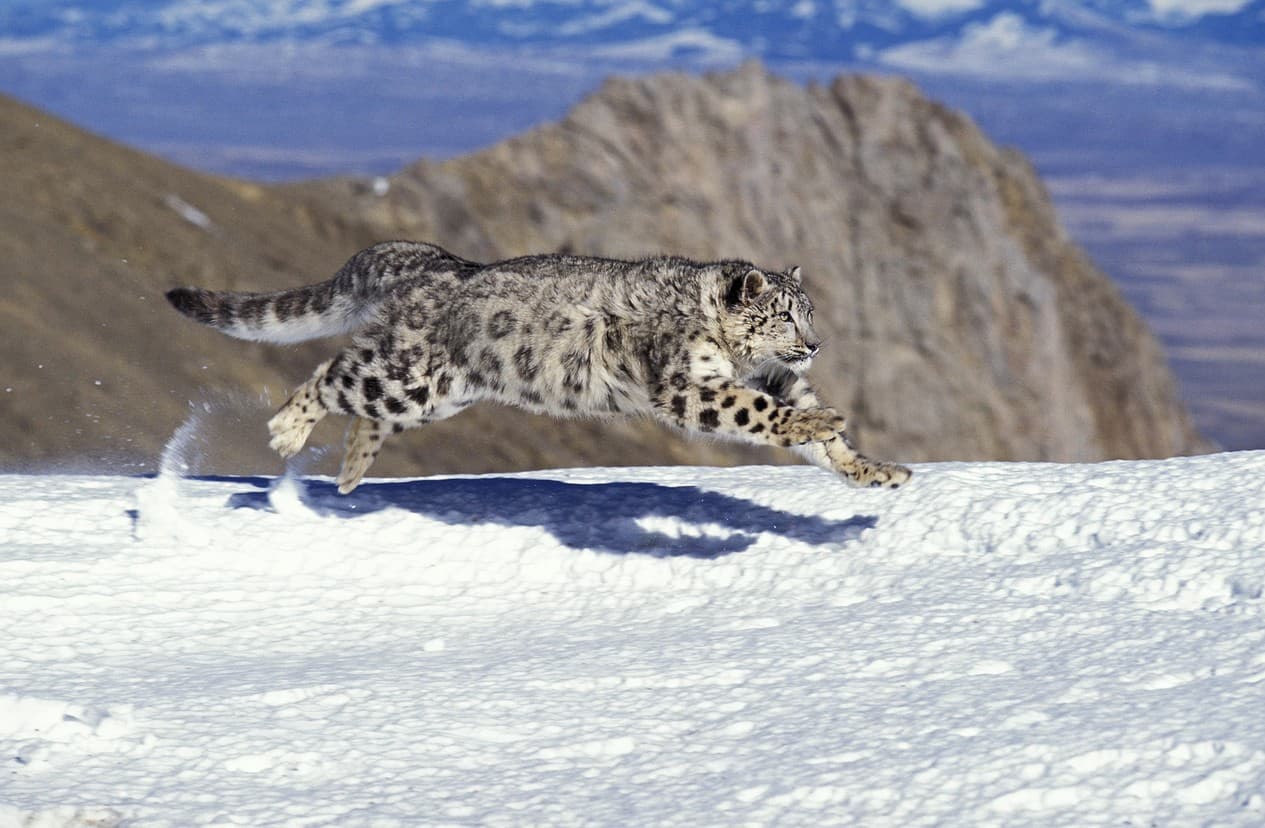Living
The Most Expensive High Schools In The United States, Ranked

We all know just how expensive college can get, with high tuition, dorm fees, books, and living costs. Most parents spend the first 18 years of their children’s life saving up for the high expenses of college. However, sometimes parents may have to dip into these savings a little early with some highly sought after high schools.
Today, we’ll look at some of the most expensive high schools in the U.S and see what makes them so desirable. The tuition on #1 is mind-blowing.

25. St. Thomas More School – $53,900
This school is the destination for basketball hopefuls. It has a long history of students who went on to play Division 1 basketball as well as playing in the NBA. Basketball isn’t all that’s offered at this all-boys school; they thrive to improve boys’ personal growth and shape them into the leaders of tomorrow. They’re also a school focused strongly on the Christian faith.

24. Linden Hall – $54,200
Linden is an all-girls school founded in 1746 with an abundance of programs and opportunities for girls. It considers itself a school where girls can thrive and develop leadership skills and build confidence. They offer flight training for girls to potentially gain a there private pilot license as well as a riding program filled with state of the art facilities such as a cross-country course. Tuition is $54,200 per year.

23. The MacDuffie School – $55,450
The MacDuffie School is a college preparatory school located in Massachusetts with a vision beyond just academically preparing students for the future with high ethical standards and individualism. There are currently 193 students enrolled, with more than 50% being international students, so diversity is a big deal. You can also expect fancy, well-prepared meals through Sage, which even has a phone app. Tuition is $55,450 per year.

22. Grier School – $55,900
This all-girls school in Pennsylvania costs $55,900 per year, but you will quickly find out why. Currently, there are 300 students enrolled, with the largest class having 14 students and classes as small as four students to provide an immersive learning experience. Besides the 21 AP courses offered here, they specialize in fine arts, dance, music, and horse-riding to push the limits of what these girls can accomplish.

21. Avenues: The World School – $56,400
Located in Manhattan, this private school also operates campuses in three other cities across the globe, where students are also allowed access. While their education is top-notch, that’s not the only thing that attracts wealthy parents. They offer after school programs such as art, music debate, chess, and much more to keep the mind active. Not only is the facility state of the art, but children receive transportation to and from school. This comes with a hefty price of $56,400 per year.

20. Woodberry Forest School – $57,250
Woodberry Forest School has one goal, and that is to prepare boys for the future. They promote moral integrity, intellectual thoroughness, and good sportsmanship. There is a squash pavilion, football stadium, wrestling room, basketball gym, and so much open space to play things like frisbee or catch with your friends. It’s a captivating experience that aims to create future leaders of the world. Tuition is $57,250 per year.

19. Kent School – $58,400
This private school in Kent, Connecticut, promises to deliver a unique experience to its students through participation and individualism. There are 172 courses, 28 AP courses, and 56 clubs and organizations, so there is always something to keep you busy. Students are pushed to exit their comfort zones and try something new to expand their minds. Tuition is $58,400 per year.

18. Midland School – $58,600
There is no better way to learn than by actually doing the task, and no school incorporates this quite like Midland. Located in California on a 2,860-acre ranch, Midland is a hybrid of a high school and ranch. Students here live in cabins and have their phones confiscated to lessen distractions and keep them engaged. They are taught hands-on lessons like maintaining the farm, chopping wood, and gardening. By the way, they do all of this while having to keep up with their classes. Tuition here is $58,600 per year.

17. The Hill School – $59,050
The Hill School is one of the most well renowned private schools in the U.S, so much so that the president’s son, Donald Trump Jr, attended there. They provide a tight-knit experience where teachers and students are well engaged in creating a great learning experience. There are athletic programs offered, such as Football, golf, soccer, field hockey, and water polo, to name a few. Tuition is $59,050 annually.

16. Northwood School – $59,920
Northwood is a boarding school located in New York that offers a college-prep curriculum with an average class size composed of 10 students. They offer a wide variety of programs outside of academics, such as an Entrepreneurship course, outdoor recreation, and community service. Not every student is required to live on campus, and they also offer a post-graduate year program. Tuition is $59,920 per year.

15. Episcopal High School – $60,900
EHS resides in Virginia on 130 acres of land. It has a 50/50 % ratio of boys to girls with all students living on campus. There are over 150 courses offered, with 75 being honors and advanced. Classes are very engaging, with an average class size of 11. Students also engage in Washington Program experiences to get hands-on experience. Tuition is $60,900 per year.

14. Salisbury School – $61,000
This school has everything from the state of the art athletic facilities to advanced classes. It is an all-boys school located in Connecticut and lies on 725 acres. They offer 15 advanced AP classes and project-based learning opportunities such as Boat Building, Digital Media, and Entrepreneurial Studies. Their goal is to provide students with all the tools necessary for a successful future in college and beyond. Tuition is $61,000 per year.

13. The Storm King School – $61,700
The Storm King School was founded in 1867 in New York and resided on 55 acres of land. There are 195 students currently enrolled, with an average of just eight people per class. They provide academic services such as world languages and ESL. Graduation requires a total of 20 credit hours of intense work that keeps students engaged and develops their thinking. Tuition is $61,700 per year.

12. St. Paul’s School – $62,000
This 2,000-acre campus located in Concord, NH, provides 145 academic offerings, 60+ student clubs, 17 different sports, and an average class size of 10. Involvement is a big deal in this school, as all students are expected to be a part of at least one sports team. 38% of their students currently receive some form of financial aid as they have packages designed for all forms of income. Tuition is $62,000 per year.

11. Trinity-Pawling School – $62,000
Trinity-Pawling School is an all-boys school located in New York that aims to provide a transformative experience for boys. “No boy sits on the sidelines” is a quote they strive to live by. Boys are transformed for the better through collaboration, critical thinking, and innovative thinking. The school sits on 230 acres, so there is more than enough space for these boys to explore. The tuition is $62,000 per year.

10. St. Andrews School – $62,280
St. Andrews School is an all-boarding school located in Delaware. It’s a Christian charter school that aims to provide top of the line education at a minimum cost, though they accept students regardless of religious background. Their goal is to develop students who are curious, thoughtful, creative, and utilize critical thinking. They offer a diverse selection of sports such as cross country, soccer, swimming, baseball, and more. Tuition is $62,280 annually.

9. Wasatch Academy – $62,300
This diverse private boarding school provides students with an opportunity for personal discovery, hands-on learning, and the potential to elevate their knowledge. Each dorm has what they call a “full-time dorm parent” that provides a home-like feeling in the dorms. What separates this school from others is it’s “Gen-Z” approach. They offer high-level learning services such as engineering, robotics, and technology to provide students with hands-on learning. It also has an art studio, ski club, and rock climbing, to name a few. It’s no wonder it costs $62,300 annually.

8. IMG Academy – $63,000
Imagine a school built for student-athletes with state of the art training facilities. This is exactly what IMG Academy is and what they offer. This is a private boarding school that focuses on helping student-athletes achieve their full potential in sports such as basketball, baseball, tennis, soccer, track, and much more. Your schedule is designed, so you have time for both classes and athletics. Tuition is $63,000 per year for this athletic-based private school.

7. The Berkshire School – $64,200
The Berkshire School sits on 400-acres in Sheffield, MA, with a population of 400 students. The school helps to keep student life interesting by offering hands-on learning and real-world experiences that help to develop the mind, which, in turn, helps keep students involved and connected. Their motto “Pro Vita Non-Pro Schola Discimus “Learning—not just for school but for life” perfectly represents their approach to learning. Tuition is $64,200 annually.

6. The Lang School – $65,000
This private school located in New York has extremely high standards for the performance of their students. For $65,000 per year, students have access to education therapy and counseling to help navigate social changes and the strict curriculum. Each school year, there is a universal question students must answer, but there are no definitive answers.

5. The Oxford Academy – $67,000
When you hear the word Oxford, you generally think of the University of Oxford, one of the greatest colleges in the world. The Oxford Academy delivers on just what you would expect a school with the name Oxford in it to do. They offer individualized learning with multiple one-on-one classes. It’s a small school with just 48 students with visual art classes and character development classes. Varsity soccer, Tennis, and basketball are some of the sports involved with the school, and BeeKeeping is another cool thing. It sits only one block away from the ocean, so with all these fantastic features and offerings, you can expect to pay $67,000 for tuition.

4. The Woodhall School – $74,500
This all-boys private school in Bethlehem, Connecticut, claims to provide an opportunity for success to above-average students who struggle in the traditional school setting. Individualism is a big deal at the Woodhall School as they want students to achieve their full potential. Class sizes are as small as 2-5 students to ensure students can work closely with teachers and their peers. Tuition is $74,500 annually, but that’s the cost of such hands-on teaching.

3. The Quad Preparatory School – $74,850
Quad Preparatory has one goal in mind, and that is to help students they consider gifted. They provide advanced classes completely tailored to challenge the minds of their students in such a way as to redefine the way they think and learn. Gifted students can feel socially different, and Quad Prep aims to provide an environment in which they feel welcomed and happy. Tuition is $74,850 per year.

2. Forman School – $80,000
Forman School is a private boarding school in Connecticut that aims to develop the minds of young people who display higher than normal academic potential. It was founded on the premise that more gifted students were held back by the more normal teaching standards. This college preparatory will set you back $80,000 for yearly tuition.

1. Shortridge Academy – $85,000
This private school located in New Hampshire will cost you $85,000 per year intuition. Shortridge Academy is a boarding school that offers services to 9th to 12th graders. It’s an extremely challenging program with an average of 50 students on campus at any given time throughout the year. The school advertises itself as providing students with a normal lifestyle while also developing critical thinking skills and individualism. However, their therapeutic support system, which provides students with mental support to deal with new and challenging situations, makes them unique.
Living
Texas Mom Welcomes Third Baby at 51 — and Says She Might Not Be Done Yet

Grace Collins, a mom from Texas, isn’t letting age define her motherhood journey. At 51, she recently welcomed her third child — a baby boy named A.J. — and says she’s not sure she’s finished growing her family just yet.
Collins first gained attention in 2024 when she went viral on TikTok for sharing her story of becoming a mom later in life through IVF. Her journey began at age 44 with the birth of her first daughter, Maggie. Two years later came her second daughter, Goldie. And in 2024, at age 50, she became pregnant again — this time with her first son.
“It’s hard being pregnant no matter what age you’re at,” Collins told TODAY.com. “And I don’t know if I’m done either!”
Though being pregnant in her 50s might seem daunting, Collins says it’s actually gotten easier over time. “I felt like I was more tired when I was pregnant at 44 than I was when I was 50,” she previously told PEOPLE. “Maybe my body just figured out how to cope, or maybe having children keeps me young.”
That sense of energy seems to carry into her everyday life as a mom of three little ones. “I’m a pretty on-the-go kind of girl,” she said. “I’ve been in the little kid daily grind since I was 44, so I don’t know any different.”
Collins also shared that age has brought some unexpected advantages. With more life experience under her belt, she feels more aware of her body and committed to her health. Before her last pregnancy, she took proactive steps to ensure she was in good shape, including a full slate of medical screenings and maintaining an active lifestyle.
“I made sure I had a healthy baseline,” she told PEOPLE. “All my pregnancies have had their hurdles — but overall, I can honestly say it’s become easier with each one.”
Despite being older than many of the parents she meets at playdates or school events, Collins says age isn’t a barrier when it comes to connecting. “The things we have in common outweigh our age differences,” she said. “If anything, having kids has honestly kept me younger.”
As for whether baby A.J. will be her last? Collins isn’t closing that door just yet. For now, she’s savoring life as a busy mom and embracing every moment. “I’m going to do everything I can to stay young and present — not just for my kids but for myself.”
Living
Friendship Benches Come to Sussex, Offering Free Mental Health Support Inspired by Zimbabwe

A simple wooden bench may seem unremarkable, but in Sussex, it’s about to become a powerful tool for tackling mental health challenges.
A pilot scheme called the Friendship Bench, originally developed in Zimbabwe, is launching in Sussex to provide free, low-barrier support for people dealing with depression, anxiety, and loneliness. The initiative places trained lay counsellors—affectionately called “grandmothers” and “grandfathers”—on benches in public indoor spaces like libraries and community centers, where they offer compassionate, non-judgmental conversation to anyone who stops by.
Founded in 2006 by psychiatrist Professor Dixon Chibanda, the Friendship Bench model was born from the idea that everyday people, especially older members of the community, can offer meaningful support. Despite receiving just two weeks of training, the lay counsellors have made a global impact. Studies, including one published in The Journal of the American Medical Association, show the program led to an 80% reduction in depression and suicidal thoughts, and a 60% improvement in quality of life among participants.
Now brought to the UK by Dr. Nina Lockwood of Brighton and Sussex Medical School, the Sussex pilot will involve ten lay mental-health workers offering six-to-eight-week support sessions. Unlike the original Zimbabwe benches that are placed outdoors, the UK’s version will adapt to the British climate with indoor seating areas.
“There is an unintended novelty to the west taking a model founded in Africa,” Lockwood said. “But just like in Zimbabwe, the UK has a massive shortfall in mental health resources compared to the demand of our population’s mental health problems. We urgently need to adopt agile, alternative ways of working.”
Trained volunteer Mebrak Ghebreweldi, from Diversity Resource International, said the approach allows time to uncover root issues, like housing insecurity or unemployment—problems that can be missed in rushed GP visits.
“GPs don’t have time for those long conversations,” Ghebreweldi explained. “They’ll just prescribe something. But when we listen, we often find that what seems like depression may actually stem from practical, solvable problems.”
Chibanda’s vision for the Friendship Bench grew from a recognition that medication and diagnoses alone can’t fix a growing global mental health crisis. “Not everyone can see a mental health professional,” he said. “But most people have access to the care, compassion, and wisdom of grandmothers—the unsung heroines of the world.”
In the UK, mental health needs are urgent. One in six adults reported moderate to severe depressive symptoms in 2022, and NHS wait times for therapy can stretch over four months. The Friendship Bench offers a hopeful alternative—one built on human connection and community.
With over half a million people already helped worldwide, the scheme’s expansion into Sussex could be a quiet revolution in how we approach mental wellness—one chat at a time.
Living
New Coral Feeding Device Offers Hope for Reef Restoration

A team of scientists from The Ohio State University has unveiled a groundbreaking device designed to enhance food sources for coral reefs, offering a potential boost to restoration efforts. The device, called the Underwater Zooplankton Enhancement Light Array (UZELA), works by attracting zooplankton to coral habitats, increasing their availability as a food source.
UZELA is a submersible, programmable light capable of operating for up to six months on a single battery. When maintenance is needed, trained divers can perform simple servicing. The device activates for roughly an hour each night, emitting a specific type of light that encourages zooplankton accumulation without disturbing other marine species. This process enhances the feeding opportunities for corals, improving their chances of survival and growth.
Encouraging Results from Initial Tests
Researchers tested UZELA near two native Hawaiian coral species, Montipora capitata and Porites compressa. Their observations showed a seven-fold increase in local zooplankton populations and a dramatic improvement in coral feeding rates—ranging from 10 to 50 times higher than usual. These findings were published in Limnology and Oceanography: Methods.
According to study lead Andréa Grottoli, a professor of earth sciences at The Ohio State University, coral reefs play a disproportionately important role in marine ecosystems. “Although reefs make up less than 1% of the ocean, they support a third of all marine life,” she explained. “With increasing threats, we must find ways to protect them.”
The Growing Threat of Coral Bleaching
Extreme ocean temperatures continue to endanger coral reefs. The U.S. National Oceanic and Atmospheric Administration (NOAA) recently reported that from February 2023 to April 2024, nearly 60.5% of the world’s coral experienced bleaching. This occurs when corals expel the algae that provide them with essential nutrients, making them more susceptible to disease and die-off.
While corals can recover if water conditions stabilize, many struggle due to a lack of available food. The presence of concentrated zooplankton, as facilitated by UZELA, could help mitigate some of the negative effects and provide corals with the nutrition they need to survive.
A Short-Term Solution with Long-Term Potential
Although UZELA is not a permanent fix for coral degradation, researchers see it as a valuable tool for temporary relief. Grottoli compared it to “a band-aid that could help buy us time” while broader solutions, like reducing carbon emissions, are pursued.
Currently, UZELA devices are assembled by hand, but researchers are working with a local engineering firm to refine the design for mass production. If successful, an improved version could be ready within the next few years, allowing for expanded deployment in vulnerable coral reef regions.
“Addressing climate change is the only way to truly save coral reefs,” Grottoli emphasized. “But tools like UZELA give us a fighting chance to protect some reefs while we work toward a more sustainable future.”
Living
Kazakhstan’s Snow Leopard Population Soars Toward Historic Highs

Kazakhstan’s snow leopard population has made a remarkable recovery, with current estimates ranging from 152 to 189 individuals. These numbers echo those last seen in the 1980s, marking a milestone in global conservation efforts. However, human activities continue to pose significant challenges to the survival of this elusive species.
Known locally as the irbis, the snow leopard is classified as vulnerable on the International Union for Conservation of Nature’s (IUCN) Red List. It is also listed in the national Red Books of all 12 countries within its range. In Kazakhstan, snow leopards inhabit rugged mountainous regions, including the Altai, Tien Shan, Zhetysu Alatau, and other large mountain systems.
Since 2018, Kazakhstan has implemented a snow leopard conservation initiative under the United Nations Development Program (UNDP). This effort has led to a population increase of over 26% since 2019. Alexei Grachev, executive director of the Snow Leopard Foundation and head of the Snow Leopard Monitoring Center, emphasized that protected areas have played a pivotal role in stabilizing and boosting the population.
Key habitats include Ile-Alatau National Park, Altyn-Emel National Park, and the Katon-Karagai Reserve. The Zhetysu region, in particular, has the highest population density due to favorable factors such as plentiful prey, effective protection measures, and minimal human interference. In contrast, the Katon-Karagai Reserve’s snow leopard population remains small but is showing signs of recovery. Photo traps first confirmed their presence in 2020, and a recent sighting of a female with two cubs offers hope for continued growth.
Ongoing Threats and Conservation Efforts
Despite the positive trends, snow leopards face persistent threats, including poaching, habitat disruption from expanding economic activities, climate change, and conflicts with local communities. To address these issues, Kazakhstan is working to expand protected areas, such as the proposed Merken Regional Park in Zhambyl Oblast. The use of satellite telemetry has also advanced conservation efforts, with 11 snow leopards collared in 2021 to monitor their movements and behaviors.
High mortality rates among young snow leopards remain a concern. Juveniles often migrate to neighboring countries where the risk of human-wildlife conflict is higher. To reduce such conflicts, Kazakhstan offers financial compensation to herders for livestock losses caused by snow leopards, aiming to prevent retaliatory killings.
International Recognition and Collaboration
Kazakhstan’s achievements in snow leopard conservation have drawn international acclaim. While many countries struggle with declining or stagnant snow leopard populations, Kazakhstan has demonstrated measurable progress. Collaborative efforts with Kyrgyzstan, supported by international agreements, have further strengthened regional conservation initiatives. UNDP projects have enhanced protection in 14 natural areas across Kazakhstan, utilizing advanced tools such as camera traps, drones, and thermal imaging devices.
The resurgence of Kazakhstan’s snow leopard population stands as a testament to effective and sustained conservation strategies. By safeguarding this iconic predator, the country contributes to global biodiversity and highlights the importance of proactive environmental stewardship.
Living
Study Highlights the Mental Health Benefits of Time Outdoors for Children

A new study has found that spending time in nature can significantly improve the mental health of children, particularly those with pre-existing emotional challenges. The research, published in JAMA Network Open, demonstrates that even simple, low-cost programs involving time outdoors can lead to remarkable benefits for children aged 10 to 12.
Nature as a Mental Health Equalizer
The study, conducted in Quebec, Canada, involved over 500 schoolchildren who participated in a three-month program in the spring of 2023. Researchers found that children with the most significant mental health issues—such as anxiety, depression, aggressiveness, and social difficulties—experienced the greatest improvements after spending two hours a week in natural environments.
Study senior author Professor Marie-Claude Geoffroy of McGill University highlighted the transformative effects:
“We found that children with higher mental health symptoms at baseline showed greater reductions in symptoms following the intervention.”
The intervention acted as a mental health equalizer, reducing disparities among children and offering particular support to those most vulnerable.
The Program: Learning in Nature
As part of the program, teachers moved regular class activities—such as lessons in math, science, and languages—into local parks or green spaces for two hours each week. Additionally, they included 10- to 15-minute activities aimed at promoting mental health. Examples included:
- Drawing a tree
- Writing haikus
- Mindful walking
The study’s first author, Tianna Loose from the University of Montreal, emphasized the simplicity and accessibility of the approach:
“The intervention was low-cost, well-received, and posed no risks, making it a promising strategy for schools with access to greenspaces.”
Positive Outcomes for Students and Teachers
At the end of the program, teachers reported that students were calmer, more relaxed, and more attentive in class after their outdoor sessions. The most significant behavioral improvements were observed in children who had exhibited high levels of distress at the start of the study.
The findings build on observational research and mark the first time a randomized controlled trial has been used to evaluate the mental health benefits of nature for children. The study aligns with a recent UNICEF report underscoring the importance of green spaces for childhood development.
Inspiration from the Pandemic
The project was inspired by the COVID-19 pandemic, when concerns arose about children spending excessive time indoors. Professor Geoffroy shared how her own experiences influenced the study:
“My kids and I spend lots of time in parks, so I’ve seen the benefits of spending time in nature, both for myself and for them. I thought, maybe we can create a free and accessible intervention for school children to experience similar benefits.”
Next Steps: Teenagers and Climate Anxiety
The research team plans to expand their work to include teenagers, co-designing nature-based programs aimed at reducing climate anxiety, improving well-being, and fostering a deeper connection to the environment.
Co-author Professor Sylvana Côté from the University of Montreal noted the broader implications of the findings:
“This suggests that nature-based programs may offer targeted benefits for children with higher levels of mental health vulnerabilities and potentially act as an equalizer of mental health among school-age children.”
A Simple Yet Powerful Solution
With schools increasingly recognizing the value of mental health support, this study highlights the potential of outdoor learning programs. By incorporating nature into the school day, educators can provide children with a calming, restorative environment that improves emotional well-being, focus, and social interaction—all without significant costs or risks.
As schools consider innovative ways to support students, nature-based interventions offer a promising solution that benefits both children and their communities.
-

 OMG7 years ago
OMG7 years agoA Couple Gave Birth to the Most Beautiful Twins Ever
-

 OMG7 years ago
OMG7 years ago20 Rare Historical Photos
-

 OMG7 years ago
OMG7 years agoHilarious Airport Photos
-

 Cute7 years ago
Cute7 years agoMom Refuses to Let Daughter Eat Sugar and Years Later This is What She Grows Into
-

 OMG6 years ago
OMG6 years agoTop Secret Air Force One Facts That You Never Knew
-
OMG6 years ago
The Funniest Yearbook Photos Of All Time
-

 OMG7 years ago
OMG7 years agoRetired Mathematician Restores Log Cabin
-

 OMG6 years ago
OMG6 years agoWhat Happened When This ‘Duck Dynasty’ Legend Chopped Off His Beard?